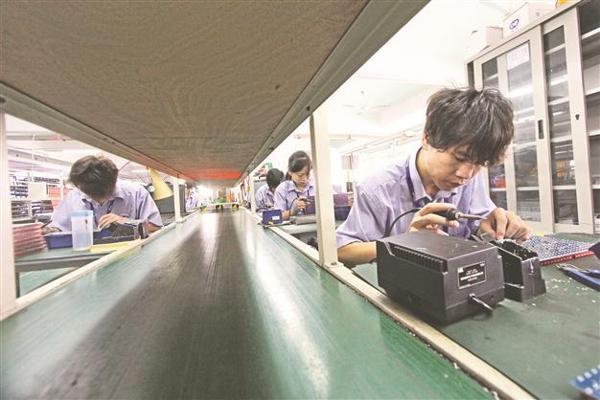Manufacturing activity in China falls to 9-month low
BEIJING - The Associated Press


Workers weld light-emitting diodes on boards at a factory in Shishi city in southeast China’s Fujian province. A recent survey claims manufacturing slowdown in China. EPA photo
China’s manufacturing activity fell to a nine-month low in August, a survey showed yesterday, stepping up pressure on Beijing for more interest rate cuts and stimulus measures to revive growth in the world’s second-largest economy.HSBC Corp. said a preliminary version of its monthly purchasing managers’ index fell to 47.8 from July’s 49.3 on a 100-point scale where numbers below 50 indicate a contraction. It said one component, new export orders, fell at its fastest rate in three years.
The report adds to signs China’s economic recovery is taking longer and will be weaker than initially forecast due in part to unexpectedly weak demand in key U.S. and European export markets.
Growth still slower than forecast
“To achieve the stated policy goal of stabilizing growth and the jobs market, Beijing must step up policy easing to lift infrastructure investment in the coming months,” said HSBC economist Hongbin Qu in a statement with the report.
The HSBC PMI is based on a survey of 420 manufacturers. HSBC said Aug. 22’s preliminary index was based on responses from 85 to 90 percent of those companies. The full version is due out Sept. 1.
Beijing has cut rates twice since June 1 and is pumping money into the economy through higher spending on public works construction. But authorities are moving cautiously after China’s huge stimulus in response to the 2008 crisis fueled inflation and a wasteful building boom.
Growth fell to a three-year low of 7.6 percent in the quarter ending June 30 and analysts who previously expected a rebound as early as the start of this year have pushed back their timeframe for recovery to the fourth quarter or early 2013.
The slowdown is due in part to government lending and investment curbs imposed in 2010-11 to cool an overheated economy and inflation. Authorities reversed course in late 2011 after a plunge in export demand but have retained controls on construction and home purchases to prevent a surge in housing costs.
